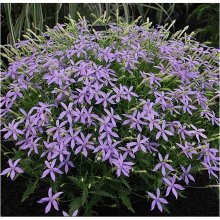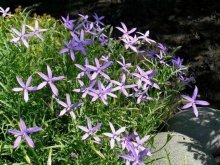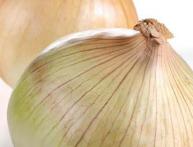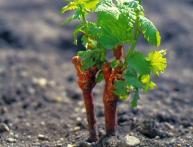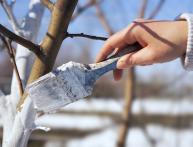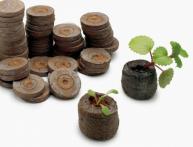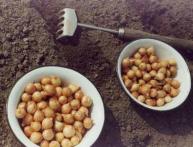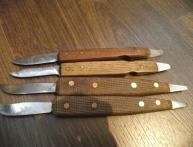Features of growing and caring for Australian Laurentia
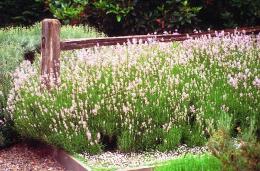
Lauretnia is an ideal plant for a small garden. She makes it elegant and cozy, and it’s easy to care for.
Content:
What is Laurentia and what does it look like?
Laurentia, or more commonly called Isotoma, belongs to the Campanulaceae family. It came to us from Australia.
This is very perennial fragile and delicate plant, there are a large number of small star-shaped flowers on it. The diameter of each reaches about 3 cm, and the height of the entire plant grows no more than 30 cm, most often about 10-20 cm.
The color of flowers can be very diverse, it all depends on the variety. The most common colors are purple and pink, which can be diluted with blue and white paints, creating beautiful transitions.
The flowering period begins in early spring, when the first stars appear on the tops of the shoots. Narrow long leaves also add to the decorative effect of Laurentia.
River Isotoma has slightly larger leaves; it is a low perennial that looks like soleirolia. It is possible to understand whether they belong to the Bellflower family only in the summer, when the blue stars bloom. The flowers of this species are small, no more than 1 cm in diameter.
This species is rarely grown at home, but since Laurentia is unpretentious, it is quite easy to do.River isotoma grows on creeping banks, covering them with a flowering carpet. The leaves are small and neat. The river species tolerates winter frosts down to -15 degrees.
In Australia, Laurentia lives in marshy soils, so in any other country it needs to be provided with similar conditions. When growing, the container is placed in partial shade.
Laurentia juice is poisonous, so you need to make sure that it does not get into your eyes or skin, and the plant should also be protected from pets.
Second common type – Lauretia hybrid. The flower grows very quickly, although it was obtained by crossing two slow-growing species. It blooms profusely and easily tolerates frost and rain. The first flowering occurs when the size of the bush reaches 18 cm. Laurentia is not so common in home cultivation, so it is difficult to find its seeds or seedlings. However, those who manage to do this will enjoy an elegant spherical plant.
Growing and care
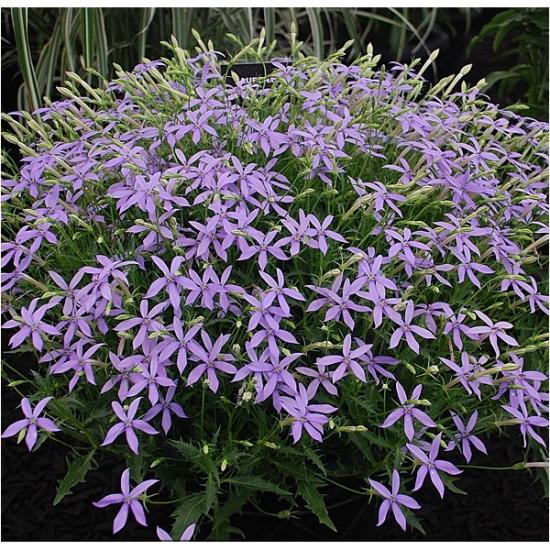
Depending on the species, the isotome has different colors. To achieve abundant, full flowering, you need to provide proper care. Isotoma loves bright places, but it is not advisable to plant it in open sun. If the plant is planted indoors, then the air temperature in winter should be no more than 15 degrees Celsius, the room should be well ventilated.
Laurentia is resistant to winter frosts; adult plants do not require shelter only in case of cold, above 15 degrees. The plant loves moisture, it is important to ensure that the soil is not too dry, but that water does not stagnate.
As for the soil, its structure should be sandy loam or loam, the acidity should be neutral.Like any other plant, Laurentia responds well to fertilization. Fertilizing the plant is carried out during the period of active growth, from spring to late autumn. Once a week, half the concentration of universal flower fertilizer is applied under the bush. In winter, fertilizing can be stopped, or it can be done once a month.
The plant does not need to be replanted; this is done during propagation by dividing the bush or as a rejuvenation.
Larentia has typical bellflower family pests are greenhouse aphids and spider mites. They attack the flower if it is too hot. Isotoma needs pruning every spring. This allows you to form a beautiful shape of the bush and make its shoots more branched.
Reproduction of Laurentia
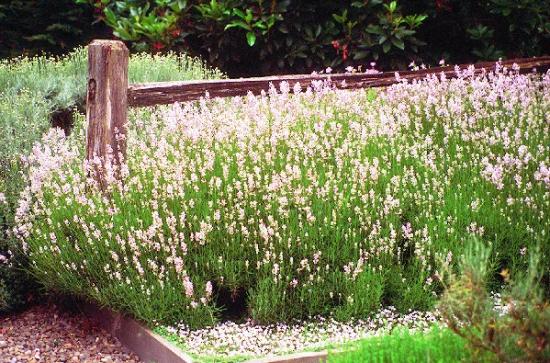
Reproduction is carried out either by dividing the bush or by seeds. The first method is suitable for obtaining two or three bushes, but if you need to sow a large amount of area or obtain a large number of seedlings, then seeds are suitable.
In its homeland, Laurentia is a perennial plant, but in our climate it can turn into an annual plant.
- Sowing of seeds is done in late August-early September. The seedlings will appear very quickly, but by the first winter they will still be strong, so you need to take care of good shelter. There is another option: sow the seeds in containers or boxes, which are moved indoors for the winter. The room should be cool, preferably a cold greenhouse or a special greenhouse.
- If Laurentia grown for sale, then sowing is carried out from December to March, that is, all winter, but this is provided that all the necessary conditions are present. If an amateur is breeding, it is better to wait until March.
- Before the beginning of summer, young shrubs are transplanted into open ground, finding a bright area and well-permeable soil. Watering is provided moderate.
- When sowing seeds in boxes, sifted high-moor peat with neutral acidity is selected. The seeds are laid out on the surface and sprinkled a little. In order for the seedlings to germinate, the air humidity must be as high as possible, up to 97%, but the substrate should not be waterlogged.
- When the first shoots appear, the temperature should be maintained at 17 degrees, day and night temperatures should be the same. After a month, you can pick individual cells or pots.
- After the leaves appear, you can start feeding. Fertilizer with macro- and microelements is applied with each watering. Watering is done often, but not abundantly.
Many plants are difficult to propagate by seed, which cannot be said about Laurentia. Under the right conditions, 90% of seeds germinate.
Laurentia is a fragile bell-shaped plant. Its big feature is its unpretentiousness and ease of propagation; not only a professional gardener, but also an amateur can cope with cultivation.
Video about the most unpretentious garden flowers:
Interesting information about the vegetable garden

